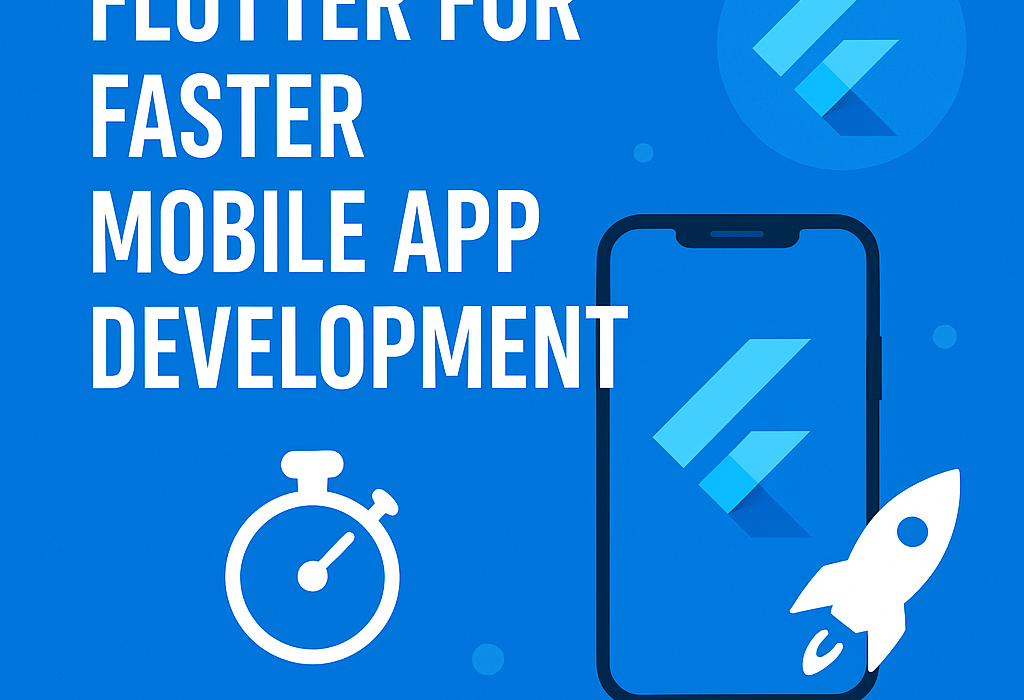How Flutter Enables Faster Mobile App Development
In today’s competitive mobile app market, Flutter for faster mobile app development is transforming how companies bring apps to market. Businesses need tools that can deliver high-quality apps quickly across multiple platforms, and Flutter, Google’s open-source UI toolkit, meets this demand with speed and performance.
1. How a Single Codebase Supports Faster Mobile App Development with Flutter
One of Flutter’s most significant advantages is its ability to use a single codebase to develop apps for both Android and iOS. This drastically reduces development time and effort. Instead of writing and maintaining separate code for each platform, developers can focus on building one high-quality application that runs natively across platforms.
2. Hot Reload for Instant Changes
Flutter’s hot reload feature allows developers to see changes in the code instantly without restarting the entire application. Whether tweaking the UI, fixing a bug, or testing a new feature, hot reload shortens the feedback loop and accelerates the development process.This feature alone makes Flutter for faster mobile app development a go-to choice for many teams.
3. Rich Set of Pre-Built Widgets
Flutter comes with an extensive library of customizable widgets for both Material Design (Android) and Cupertino (iOS). These widgets help developers quickly build visually attractive UIs without starting from scratch. The consistent behavior across devices also reduces testing time.
4. Expressive and Flexible UI
Flutter’s architecture is designed to deliver high performance with expressive UIs. Its layered architecture gives developers full control over every pixel on the screen, enabling custom UI and animations that would be time-consuming to implement in other frameworks.
5. Integrated Testing Tools
Flutter includes built-in support for unit, widget, and integration testing. These tools streamline the quality assurance process, making it easier to identify and resolve bugs early in the development cycle, which ultimately saves time.
6. Strong Developer Community and Ecosystem
A vibrant community means extensive documentation, countless plugins, and readily available solutions to common problems. This support helps developers overcome challenges quickly and focus more on building features.
Pros and Cons: Native vs Flutter Development
Pros of Flutter Development:
Single codebase for iOS and Android saves time and cost
Fast development with hot reload
Wide variety of ready-to-use widgets
High-performance apps thanks to Dart and Flutter engine
Strong community support and growing ecosystem
Cons of Flutter Development:
Larger app size compared to native apps
Limited access to some platform-specific APIs or features
May require writing native code for advanced use cases
Slightly lower performance than fully native apps in edge cases
Pros of Native Development:
Full access to platform-specific APIs and native performance
Better integration with system features (Bluetooth, sensors, camera)
Highly optimized UI and animations tailored to each platform
Cons of Native Development:
Two separate codebases to maintain (iOS and Android)
Longer development cycles
Higher cost due to need for separate platform expertise
Conclusion
Flutter simplifies and speeds up mobile app development through its unified codebase, hot reload, customizable widgets, and robust performance. For companies like RULTECH looking to deliver high-quality cross-platform applications rapidly, Flutter proves to be an invaluable tool that balances efficiency, flexibility, and native performance. RULTECH continues to adopt Flutter for faster mobile app development to meet client needs efficiently.

